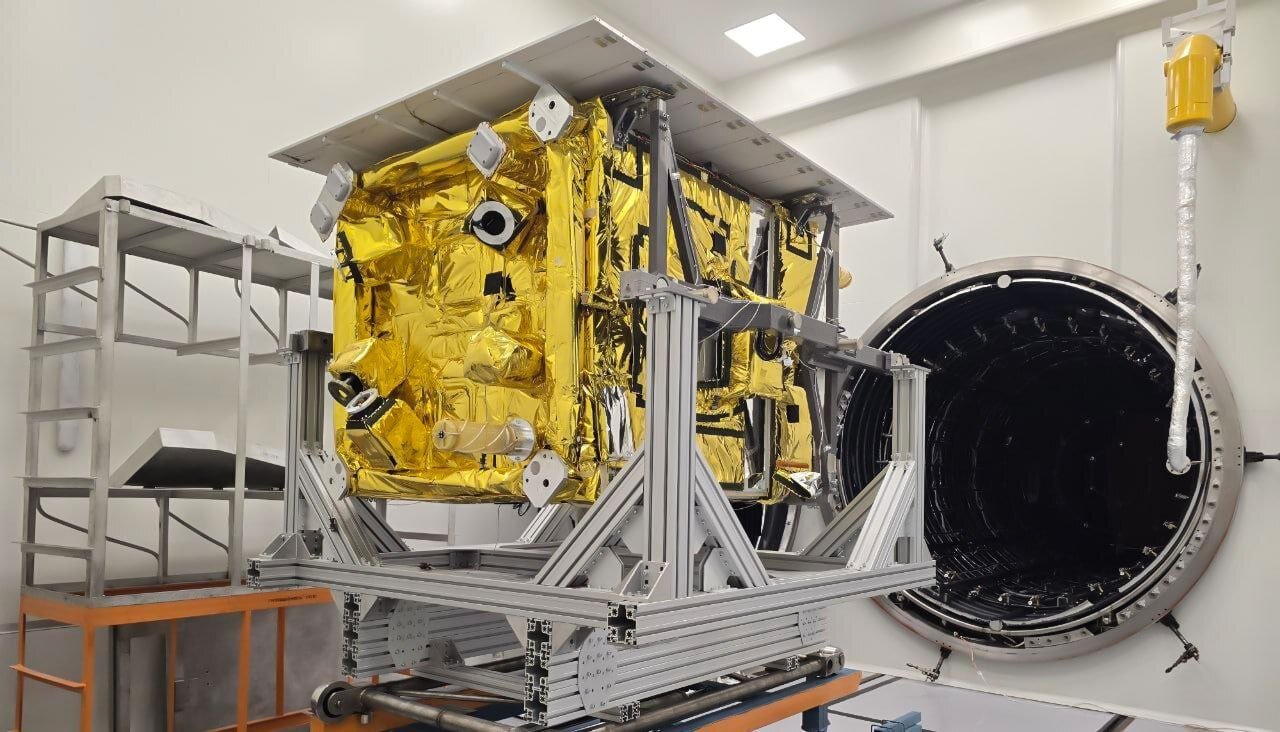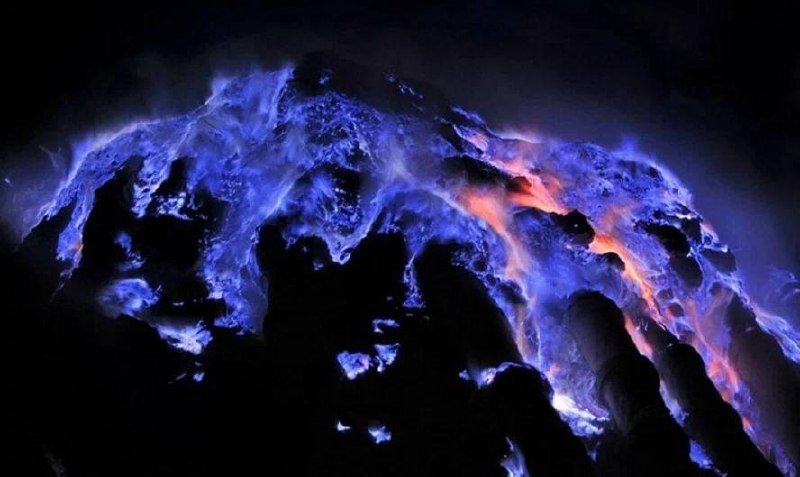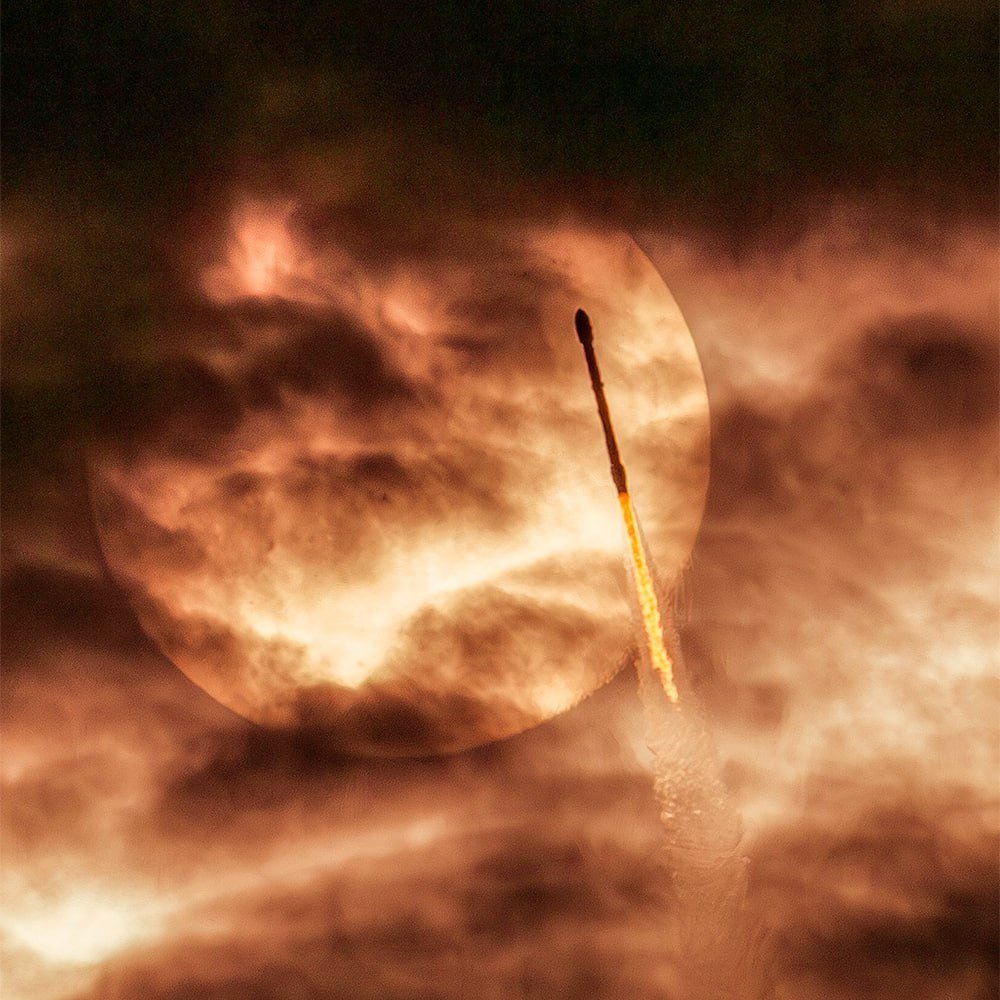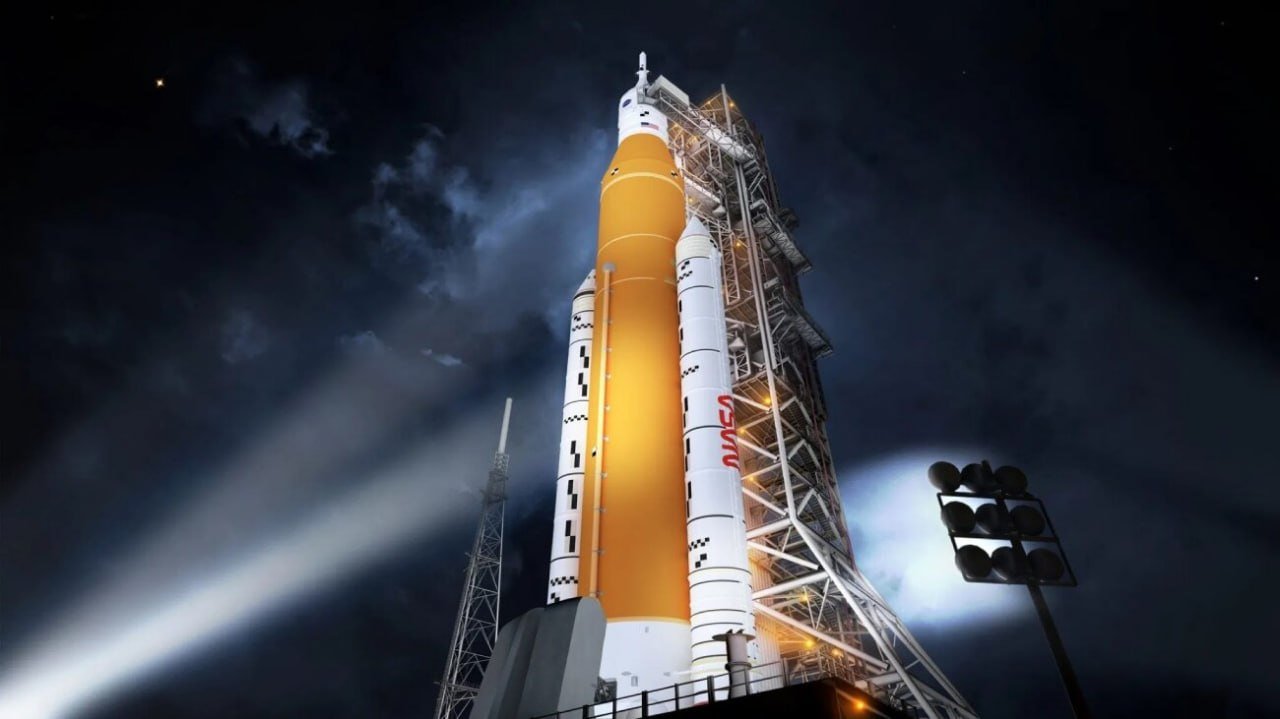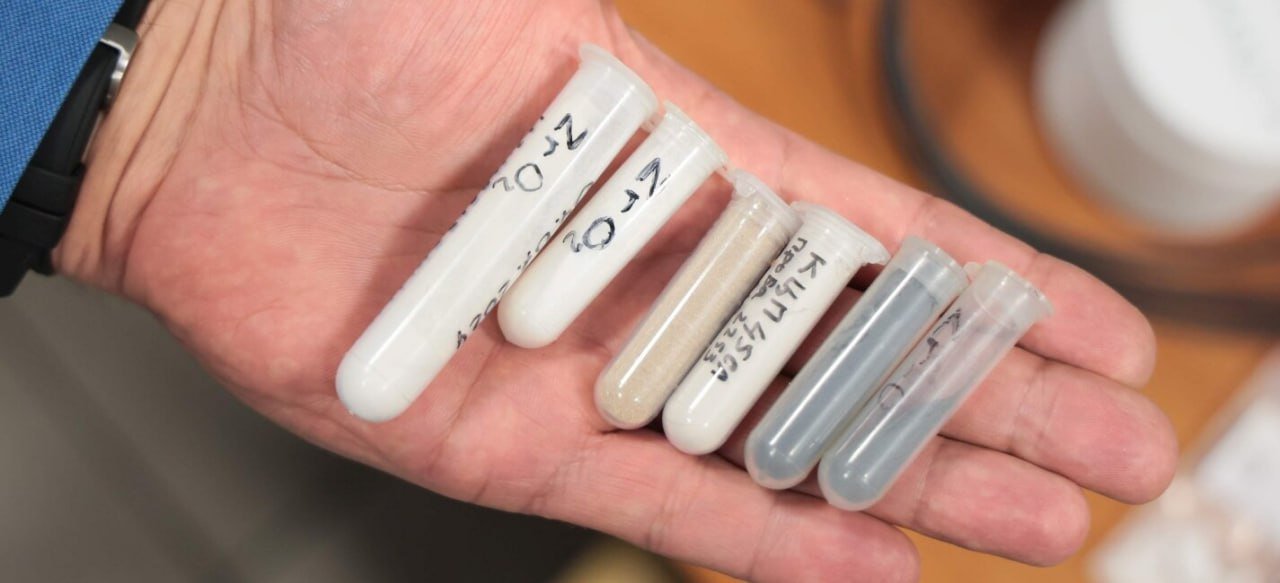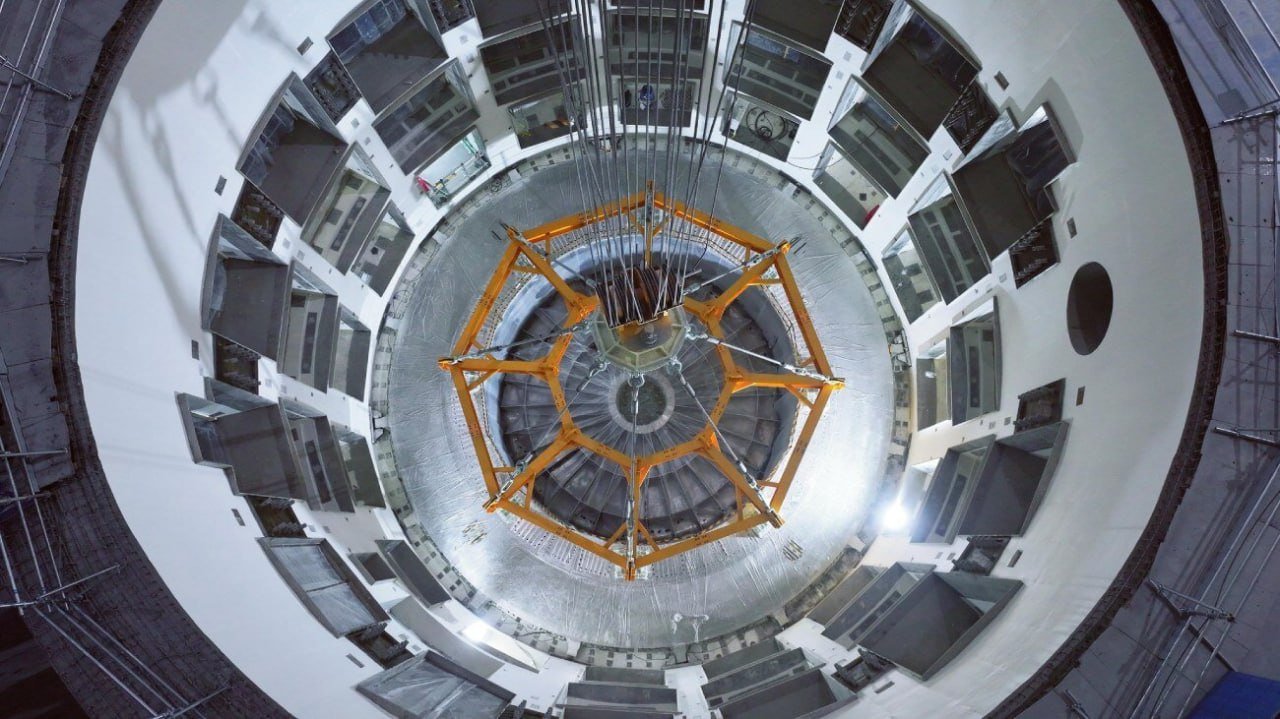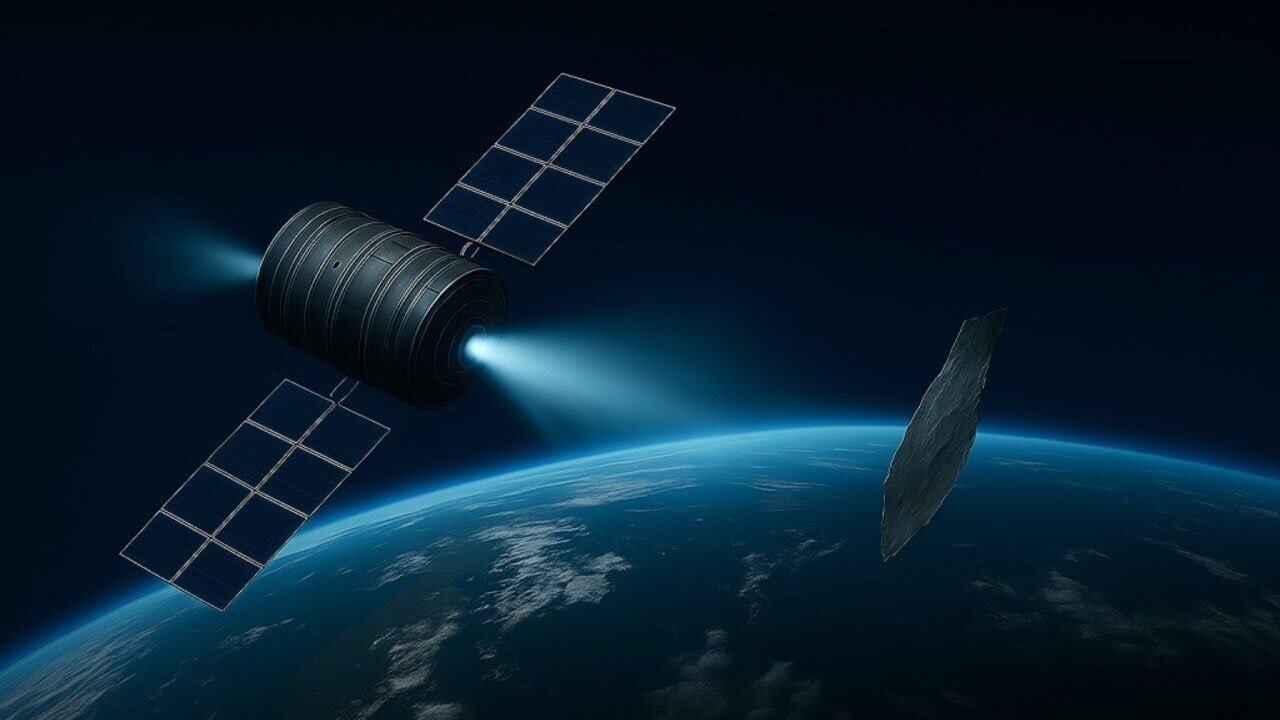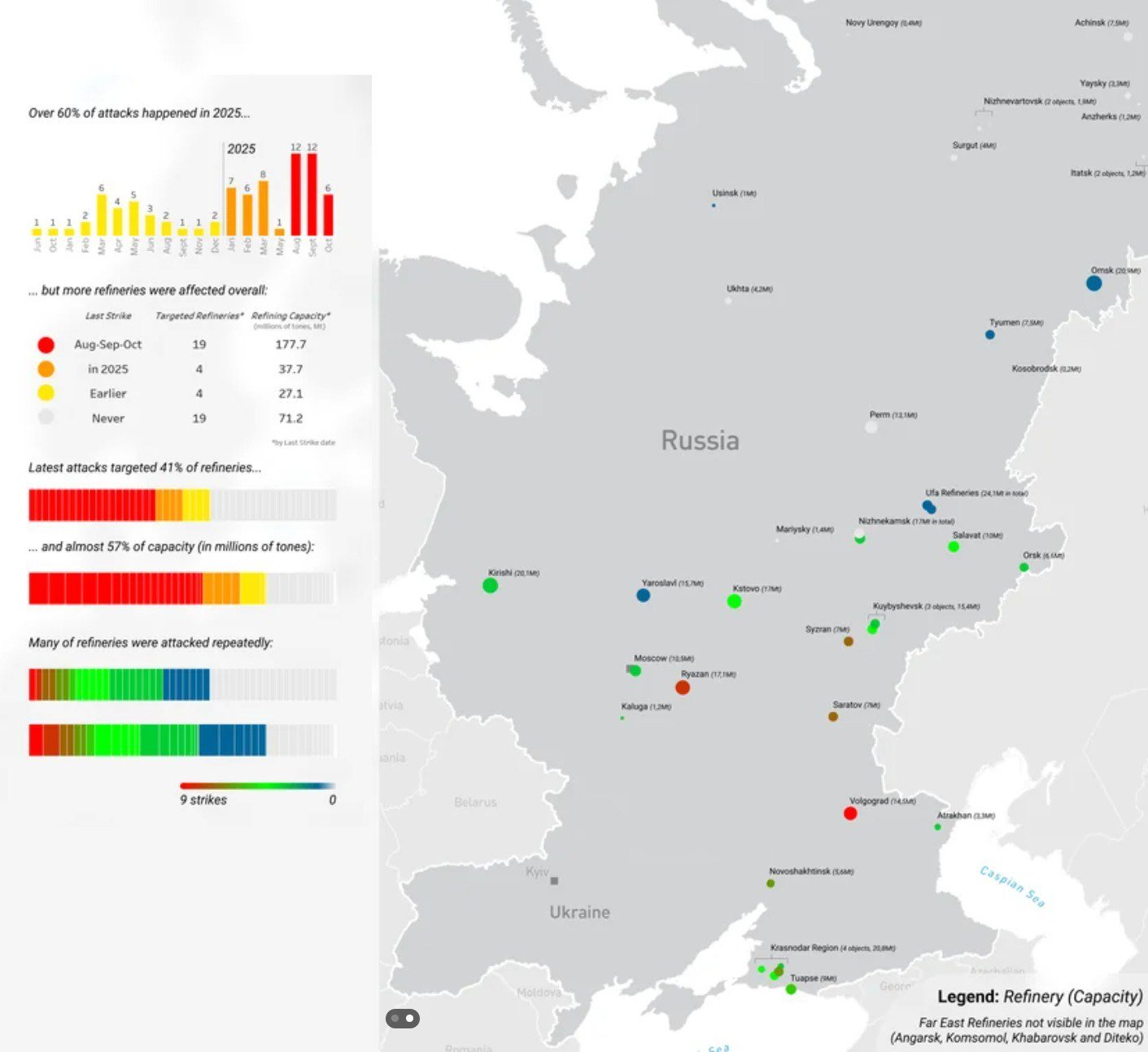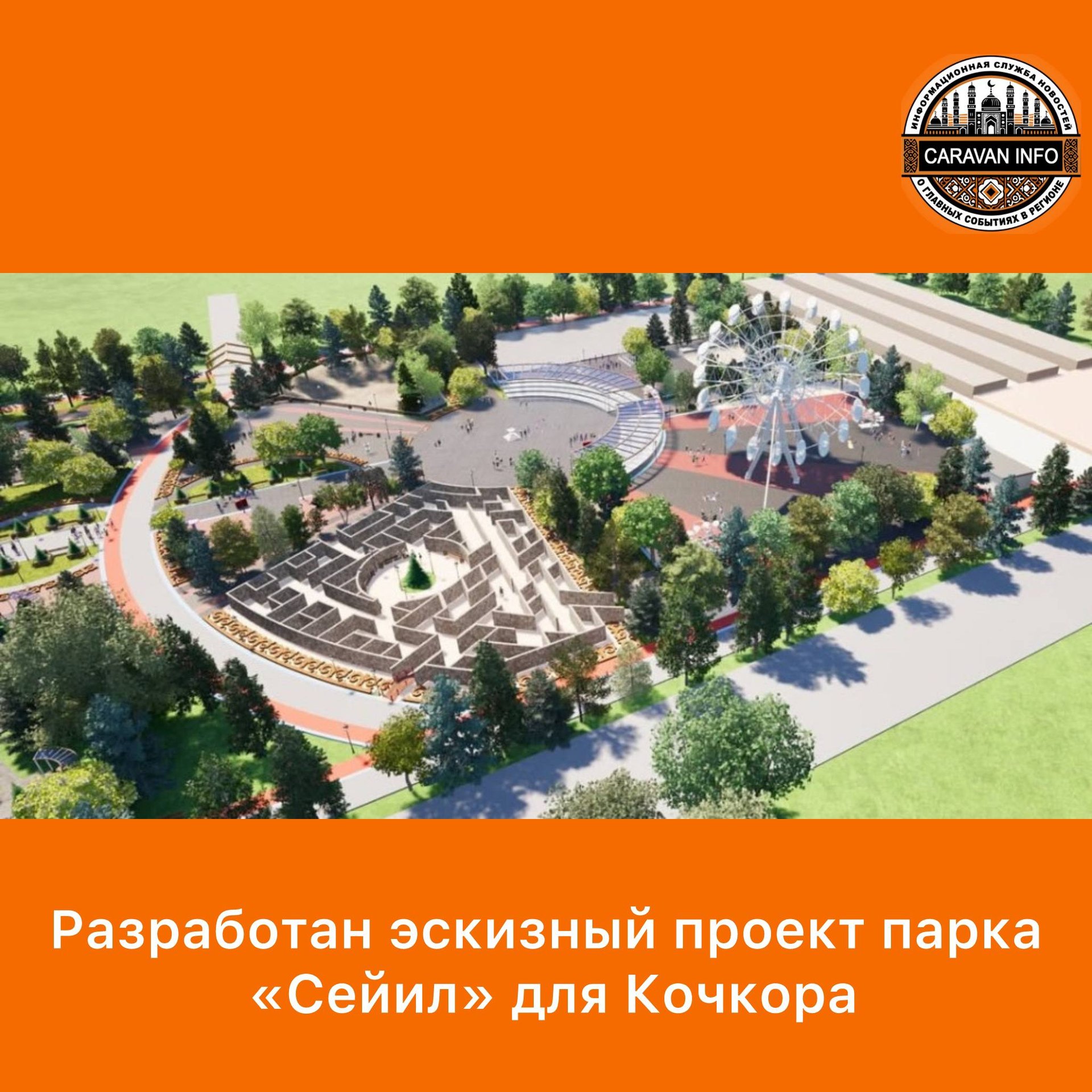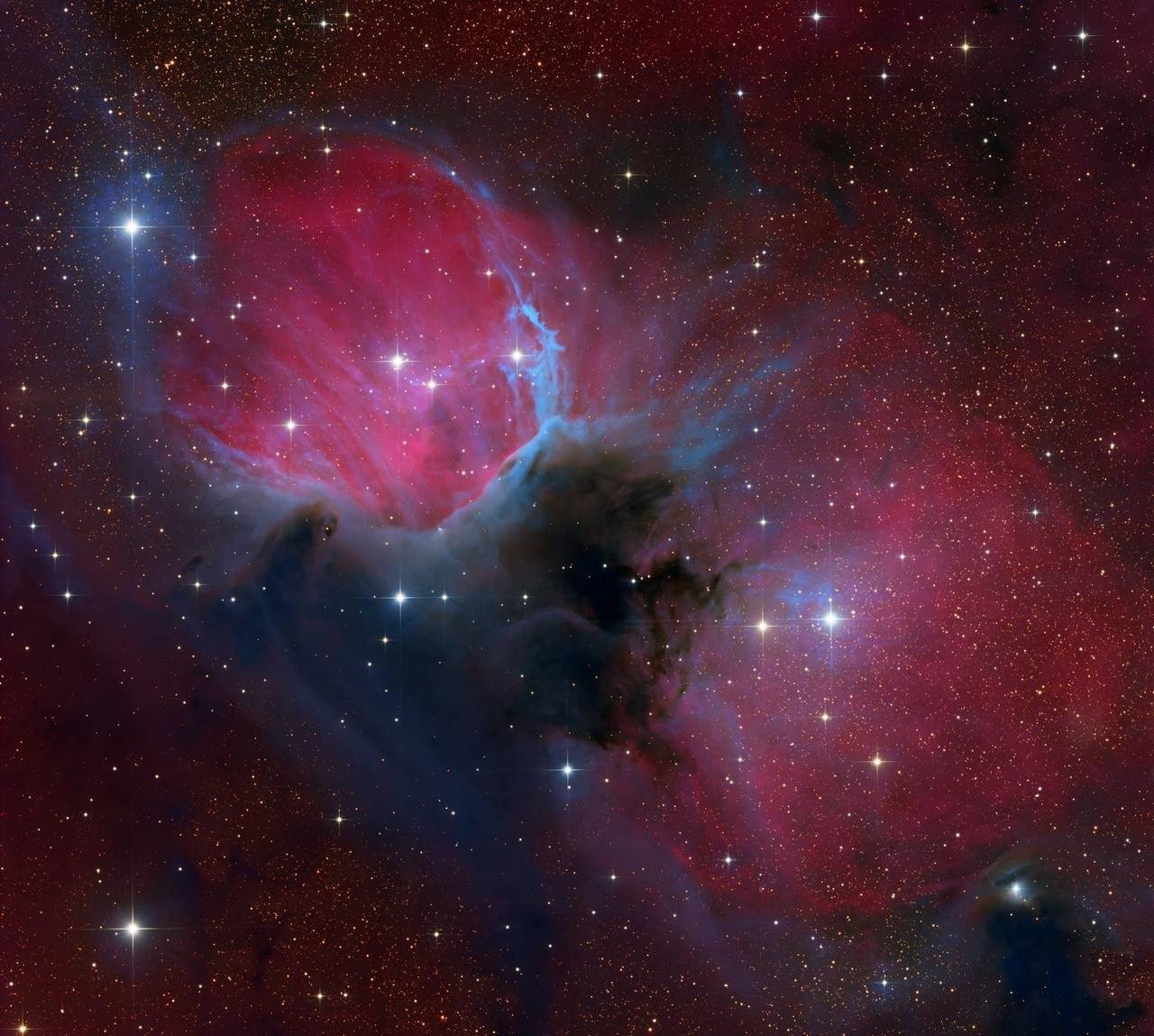Barl Completes Thermal Vacuum Testing of "EOS-O" Satellite Thermal Model
Barl Completes Thermal Vacuum Testing of "EOS-O" Satellite Thermal Model Engineers conducted thermal vacuum testing on the "EOS-O" satellite model by placing it in a cryothermal vacuum chamber. This simulation aimed to replicate heat conditions from the Sun and outer space. The testing assessed the satellite's various modes, such as orbital and solar orientation, including functions like Earth imaging and orbit correction. The "EOS-O" satellite is specifically crafted for Earth remote sensing purposes, equipped to gather data at an exceptional resolution of 0.5 meters per pixel from a 500 km orbit.
